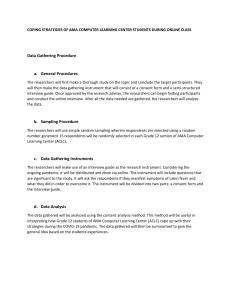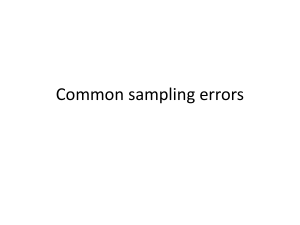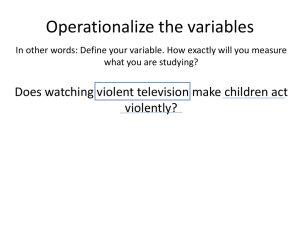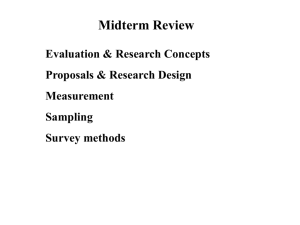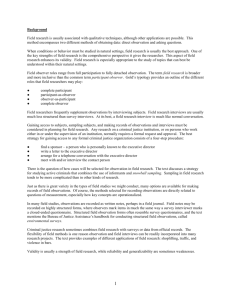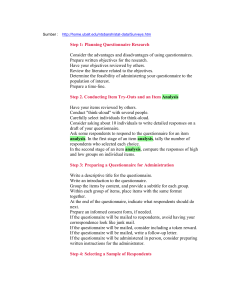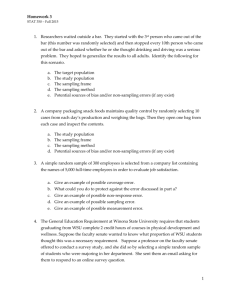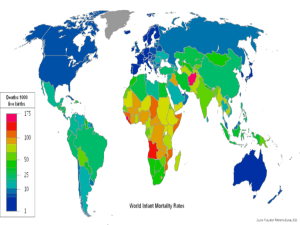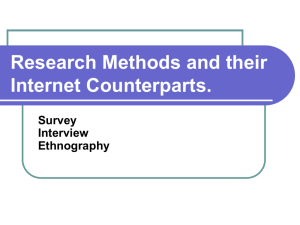Chapter 6
advertisement
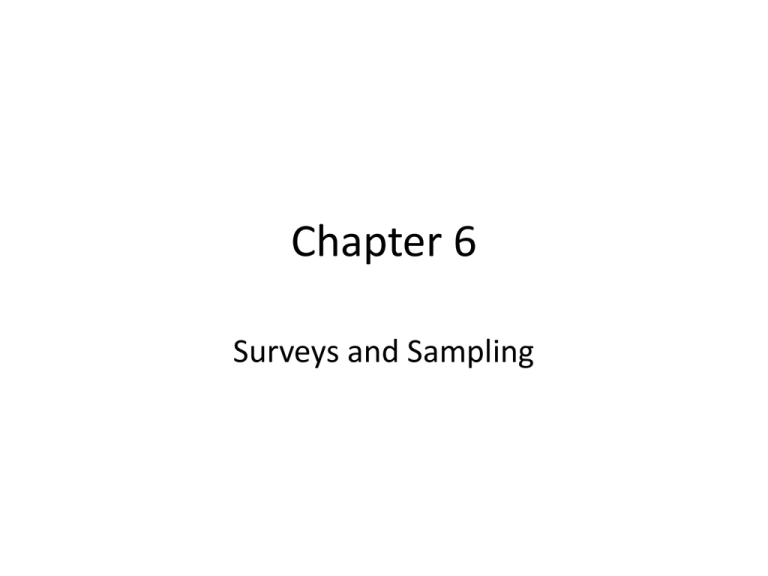
Chapter 6 Surveys and Sampling Surveys • Survey – a series of self-report measures administered through either an interview or a written questionnaire. • The most widely used method of collecting descriptive information about a group of people. Surveys • The goal of a survey, as with all descriptive research, is to produce a “snapshot” of the opinions, attitudes, or behaviors of a group of people at a given time. Survey by Interview • Questions are read to a respondent: Telephone Face-to-Face Free-Format Interviews • In an Unstructured Interview the interviewer talks freely with the person being interviewed about many topics. • Focuses on topics the respondent is most interested in or knowledgeable about. Individual Respondents Focus Groups Qualitative Open-Ended Questions Fixed-Format Interviews • Because researchers usually want more objective data, the Structured Interview, which uses quantitative fixed-format items, is most common. Highly Structured All Questions Prepared Ahead of Time Closed-Ended Questions Quantitative Questionnaires • A Questionnaire is a set of fixed-format, selfreport items that is completed by respondents at their own pace, often without supervision. • Less expensive than interviews • Websites and Mail • Appearance of greater anonymity for respondents • May produce greater honesty from respondents The Response Rate • Response Rate – the percentage of people who actually complete the questionnaire and return/send it to the researcher. • A low response rate may lead to incorrect conclusions (different populations?) • Some incentivize with gifts or monetary payments Question Order 1. “How satisfied are you with your relationships with your family?” 2. “How satisfied are you with your relationship with your spouse?” • If answered out of order… • May lead to Measurement Error Use of Existing Survey Data • U.S. Census (every 10 years) • General Social Survey (U.S. sample every year) • Human Area Relations Files (International) Sampling and Generalization • Measure an entire Population to get a Census • Measure a Subset of a Population and you have a sample Representative Sample • A Representative Sample is one that is approximately the same as the population in every important respect. Simple Random Sampling • For Simple Random Sampling, the goal is to ensure that every person in the population has an equal chance of being selected to be in the sample. • Need a complete list of everyone in the population • Use random number generator Sampling Bias • Sampling Bias – occurs when the sample is not actually representative of the population (because the probability with which members of the population have been selected for participation is not known). Snowball Sampling • A few population members are contacted, and these individuals are used to lead the researcher to other population members. • Homeless • Underground Groups Convenience Samples • Whomever is readily available.



